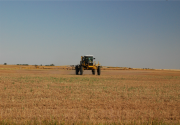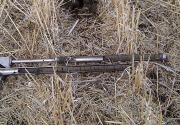| |
| |
 |
| |
 |
|
MMMM d, yyyy |
|
| |
Cover cropping is a promising approach to reduce some of the negative environmental impacts of production agriculture. Cover cropping also has its risks, especially if dying cover crops encourage disease pressure that passes on to the next crop.
» Read more...
G3 Canada Limited announced it will construct two new primary elevators in Saskatchewan. The sites are located approximately five kilometres north of Melville on Highway 10, and seven kilometres west of Saskatoon on Highway 14.
» Read more...
Crops in the area south of Edmonton are among the more than 400,000 hectares of Alberta crops left damaged by rain and snow after winter's early arrival last fall.
Farmers who want to burn those crops will have to apply for a permit.
» Read more...
|
| |
 |
 |
| |
|
| |

Soil fertility and fertilizer management directly influence yield and quality in canola. To avoid deficiencies, sulphur application should be based on the uptake needs of the crop and the anticipated yield. Canola also has a high requirement for boron. Like sulphate, boron is mobile in the soil and can move out of the root zone with excessive rainfall or irrigation, leading to deficiencies. Supply your canola crop with TIGER 90CR ®, TIGER XP, or TIGER Boron 2% ® to unlock better yields and ROI.
>> Learn more |
| |
|
| |
 Kochia is predisposed to develop herbicide resistance because it produces 15,000 to 25,000 seeds per plant and spreads extensively when blown on the wind. As a result, when a kochia plant is selected for resistance, it can quickly multiply and spread the resistance to other fields. Additionally, kochia outcrosses and pollen flow from plant to plant can further spread resistance.
» Read more...
Kochia is predisposed to develop herbicide resistance because it produces 15,000 to 25,000 seeds per plant and spreads extensively when blown on the wind. As a result, when a kochia plant is selected for resistance, it can quickly multiply and spread the resistance to other fields. Additionally, kochia outcrosses and pollen flow from plant to plant can further spread resistance.
» Read more... |
| |
 Send five soil test samples to five different labs and you’ll likely get five different recommendations. Understanding why will help you get the most out of your fertilizer dollars and optimize yields over the long term. There are four important steps that are part of the art and science of soil testing: sampling; extraction and chemical analysis; correlation and interpretation; and fertilizer recommendations.
» Read more...
Send five soil test samples to five different labs and you’ll likely get five different recommendations. Understanding why will help you get the most out of your fertilizer dollars and optimize yields over the long term. There are four important steps that are part of the art and science of soil testing: sampling; extraction and chemical analysis; correlation and interpretation; and fertilizer recommendations.
» Read more... |
| |
 |
 |
| |
|
| |
|
|
| |
| |








